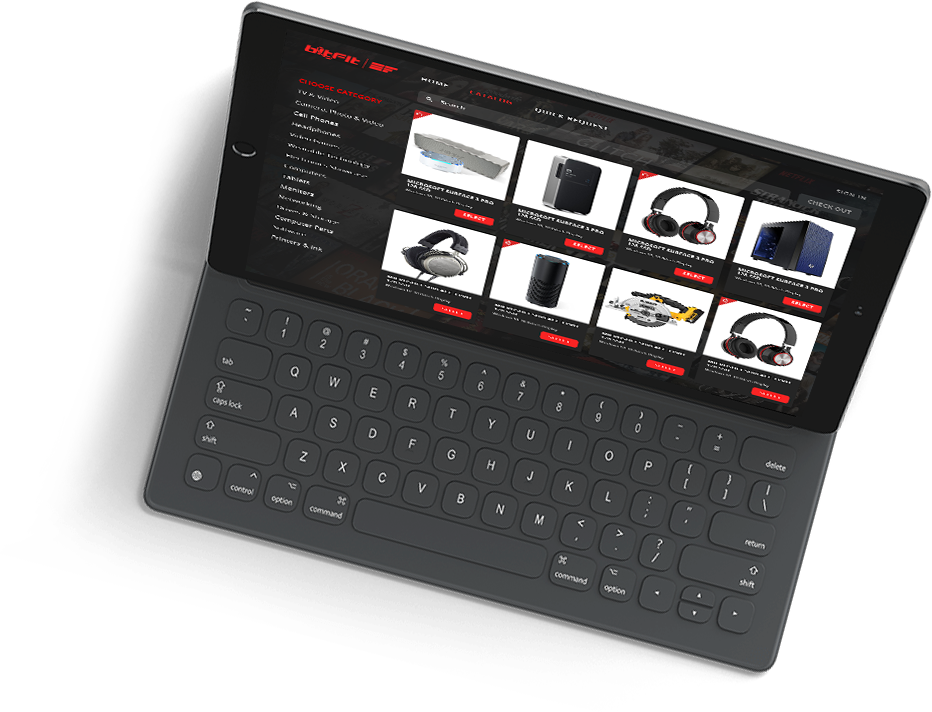
As organizations increasingly rely on technology to drive their operations, the role of IT Asset Management (ITAM) becomes more critical. This comprehensive exploration looks into the evolving nature of ITAM, underscoring the technological advancements, shifts in business methodologies, and the emerging challenges that shape its landscape.
Current Landscape
At the core of organizational IT infrastructure, ITAM plays a vital role in managing, controlling, and securing an array of IT assets. This includes not only hardware and software but also a variety of digital and service-based assets critical for daily operations. As the complexity of IT environments grows, ITAM’s scope expands, necessitating more sophisticated management strategies.
Core Components of ITAM
Hardware Asset Management
Hardware asset management involves meticulous tracking of all physical technology components within an organization, from servers and endpoints to networking devices. Effective management ensures optimal deployment, timely upgrades, and adherence to warranties and vendor agreements.
Software Asset Management (SAM)
Software Asset Management (SAM) focuses on the lifecycle management of software applications, from procurement to decommissioning. It addresses licensing compliance, helps in cost management by avoiding unnecessary software purchases, and ensures that software assets are fully utilized and effectively maintained.
Digital Asset Management
Digital asset management extends beyond hardware and software to include digital files and content like mobile apps, multimedia (images, videos, documents), and web-based services. Strategic management of these assets helps protect intellectual property and optimize the utilization of digital resources.
Services Management
Services management covers the management of IT-related services, including subscription-based software-as-a-service (SaaS) models and cloud-hosting services. Proper management ensures these services align with business needs and performance expectations, all while keeping costs in check.
Challenges in ITAM
Manual Processes and Data Inaccuracy
Dependence on manual methods for tracking and managing assets can lead to inaccuracies, inefficiencies, and potential mismanagement of IT assets, which in turn can inflate costs and obscure asset visibility.
Integration Difficulties
The increasingly complex hybrid and multi-platform IT environments pose significant challenges in maintaining a unified asset registry, thereby complicating comprehensive asset management and strategic planning.
Cybersecurity Vulnerabilities
Gaps in asset inventories can expose organizations to heightened cybersecurity risks, particularly when outdated or unsupported systems remain in use without adequate safeguards.
Compliance and Regulatory Challenges
Navigating the evolving landscape of global and industry-specific regulations demands rigorous compliance measures, a task complicated by the varying requirements across different sectors and regions.
Driving Forces Behind ITAM Evolution
Technological Advancements
The integration of AI and machine learning is poised to revolutionize ITAM by automating complex workflows, improving asset tracking, and enhancing security protocols.
Regulatory Changes
New and evolving data protection regulations worldwide compel organizations to refine their ITAM strategies to ensure stringent compliance.
Business Trends
As remote work becomes more common, ITAM strategies must adapt to manage off-premise assets and expand the use of cloud-based services effectively.
Future Trends in ITAM
Automation and AI
Enhanced automation will streamline ITAM processes, reducing human errors and freeing up resources for strategic tasks. AI-driven tools will offer predictive analytics for better asset management decisions, including forecasting needs for asset replacement and upgrades.
Holistic IT Management Approaches
The convergence of ITAM with IT Service Management (ITSM) promises a unified management approach that aligns IT assets more closely with overall business operations, enhancing efficiency and responsiveness.
Sustainability and Green IT
Environmental considerations will increasingly influence ITAM practices, promoting the adoption of energy-efficient assets and sustainable disposal and recycling practices.
Enhanced Security Measures
Advanced ITAM tools will provide deeper insights into asset status and security, essential for safeguarding remote and mobile assets and integrating comprehensive security solutions directly into ITAM frameworks.
Challenges to Anticipate
Adapting to Technological Innovations
Rapid technological developments necessitate continual updates to ITAM frameworks to accommodate emerging asset types and integrate new technologies seamlessly.
Security and Compliance Concerns
ITAM must address evolving cybersecurity threats and complex compliance requirements, particularly in managing data privacy across different regulatory environments.
Expert Opinions and Future Predictions
The landscape of IT Asset Management (ITAM) is expected to undergo significant transformations driven by a confluence of technological innovations and changing business needs. Leading industry experts offer diverse perspectives and forecasts that highlight the strategic evolution of ITAM practices:
Enhanced Real-Time Analytics
The future of ITAM is seen to leverage real-time data analytics extensively. By utilizing IoT devices and sensors integrated with IT assets, organizations can achieve real-time monitoring and management, leading to more proactive maintenance, optimized asset performance, and immediate issue resolution.
Greater Customization Through AI
Artificial intelligence is expected to bring about highly customized ITAM solutions that can adapt to specific industry needs and organizational structures. AI-driven systems could analyze vast datasets to suggest optimization strategies tailored to the unique dynamics of each business, enhancing efficiency and reducing costs.
Shift Towards Service-Centric Models
With the increasing adoption of cloud services and SaaS, experts foresee ITAM evolving from a traditional asset management model to a service-centric approach. This shift will require ITAM strategies to not only manage physical and software assets but also effectively oversee service agreements and vendor relationships.
Predictive Asset Lifecycle Management
Advanced predictive analytics and machine learning models will likely become crucial in forecasting the end-of-life of IT assets. This will allow organizations to plan more effectively for asset disposal, updates, and replacements, thus minimizing downtime and optimizing budget allocations.
Increased Focus on User Experience (UX)
As ITAM tools become more sophisticated, there will be a growing emphasis on enhancing the user experience for ITAM professionals. Simplifying interfaces and increasing the usability of ITAM software will be crucial in enabling staff to manage assets more effectively and with greater job satisfaction.
Cross-Domain Integration
Experts also envision a more integrated approach where ITAM intersects with other organizational management systems such as enterprise resource planning (ERP) and customer relationship management (CRM). Such integration would provide a holistic view of how IT assets impact other business areas, driving more cohesive strategic decisions.
Sustainability Metrics
With an increasing corporate focus on sustainability, future ITAM systems are predicted to include metrics for measuring the environmental impact of IT assets. This could cover energy consumption, carbon footprint, and the overall sustainability profile of the IT infrastructure, aligning IT asset management with broader environmental goals.
These expert insights and predictions reflect a broad consensus that ITAM will become more technologically advanced and more integral to organizations’ strategic and operational fabric. As ITAM practices evolve, they are expected to address traditional management issues and align closely with innovative technologies and sustainability considerations.
The Importance of Choosing the Right Asset Management Tool
An optimal ITAM tool streamlines operations, enhances decision-making, and future-proofs an organization against emerging challenges. One of the standout leaders in the market is bitFit, known for its cutting-edge technology and comprehensive features.
Innovative Features of bitFit
- Process Building: bitFit’s advanced process-building capabilities allow organizations to customize and automate their asset management workflows. This feature ensures that asset management processes align perfectly with each business’s unique operational needs, enhancing efficiency and reducing manual errors.
- Advanced Reporting: bitFit offers sophisticated reporting tools that provide deep insights into asset utilization, lifecycle status, and more. These reports are crucial for strategic planning and decision-making, allowing managers to optimize asset use and plan future investments effectively.
- QR Labeling: With bitFit’s QR labeling system, assets can be quickly scanned and identified using mobile devices. This technology facilitates easy tracking and management of assets throughout their lifecycle, from acquisition to disposal, ensuring that all asset data is easily accessible and up-to-date.
- Mobile Apps: bitFit’s mobile applications extend the functionality of ITAM systems to mobile devices, allowing asset managers and IT staff to manage and track assets on the go. This is particularly beneficial in today’s flexible working environments, where assets may be spread across multiple locations.
Future Innovations: AI in Asset Management
bitFit is actively working on integrating Artificial Intelligence (AI) into its asset management solutions. The incorporation of AI is set to transform how organizations manage their IT assets, offering unprecedented capabilities in predictive analytics, automated problem resolution, and proactive asset maintenance and data hygiene. This innovation aims to minimize downtime and extend asset life by predicting issues before they occur and optimizing maintenance schedules based on actual asset usage and condition.
Conclusion
The transformative phase ahead for ITAM, driven by technological advances and shifts in business practices, presents both opportunities and challenges. Organizations that can swiftly adapt to these changes will likely emerge as leaders in the new era of IT management, leveraging ITAM not just for operational support but as a strategic business asset.

